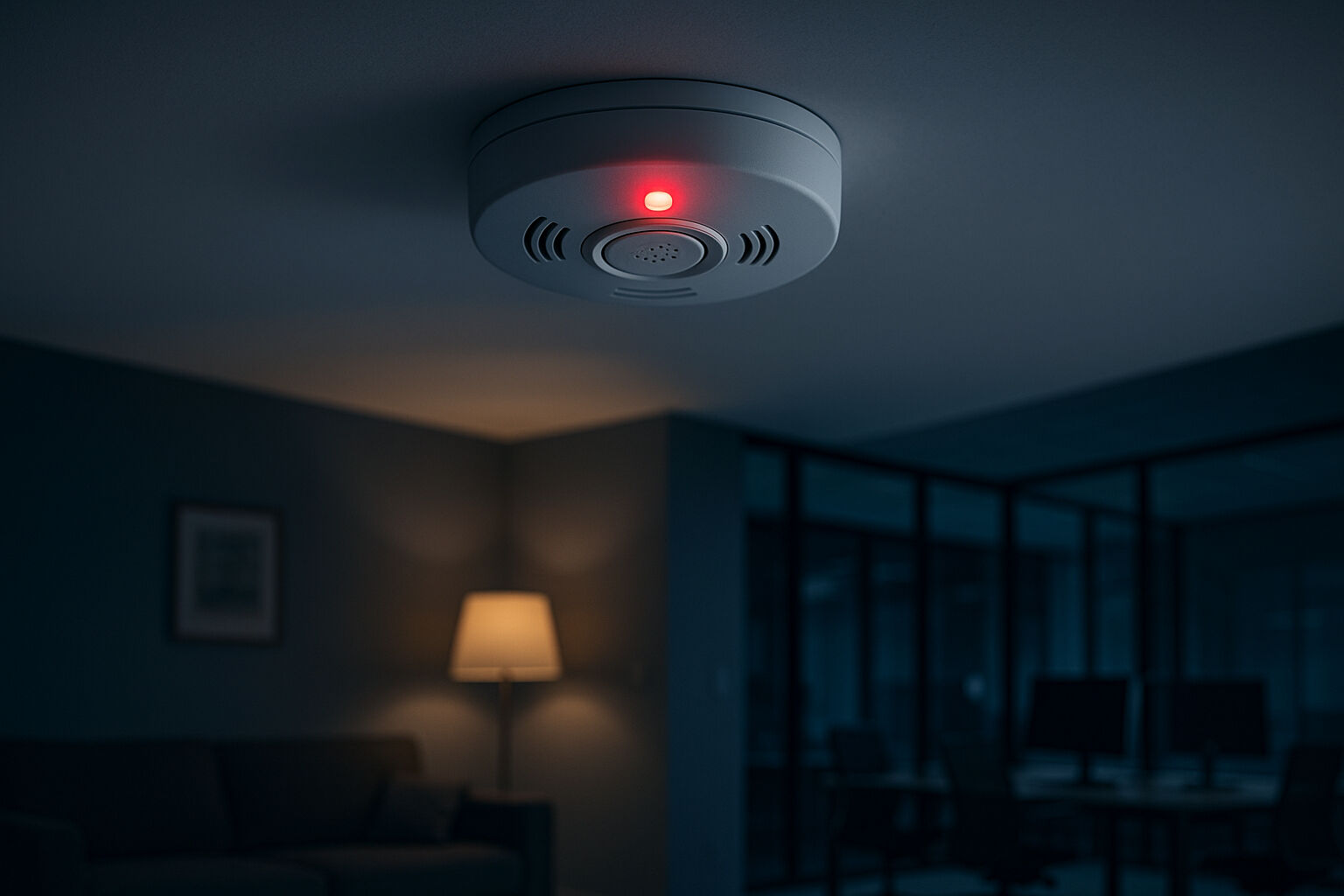
It’s 3 AM, and the calm of your business premises is disrupted by the sharp blare of smoke alarms. In the haze of confusion, it takes a moment to recognise the sound. A quick investigation reveals no fire or smoke—just a false alarm, with one unit flashing to indicate the trigger.
But what if it had been a real fire? Would your business be ready to respond effectively and recover swiftly? False alarms—often caused by dust, insects, or low batteries—are an important reminder to prioritise fire safety.
At MiSAFE Solutions Pty Ltd, we specialise in business-to-business (B2B) fire safety solutions that help organisations strengthen compliance and protect their assets. Please note: MiSAFE Solutions Pty Ltd provides services exclusively to businesses, not individual consumers, and we do not install fire equipment.
Our services include fire and evacuation diagrams, emergency management plans, non-RTO training, risk analysis and mitigation strategy workshops, and implementation assistance. This article outlines key steps to enhance workplace fire safety, supported by authoritative Australian resources.
Ensuring Smoke Alarm Reliability
Smoke alarms are essential for early fire detection in commercial settings. Australian law mandates their installation, though requirements vary by state and property type.
In Queensland, for example:
– By 1 January 2025, properties managed by businesses (such as rentals or accommodations) must comply with upgraded smoke alarm standards.
– By 1 January 2027, interconnected photoelectric smoke alarms must be installed in designated areas of commercial buildings, as required by Queensland Fire Department legislation.
For full details, visit:
– Queensland Government – Smoke Alarm Legislation(https://www.qld.gov.au/emergency/safety/fire/smoke-alarms)
– Queensland Fire and Emergency Services (QFES) – Smoke Alarm Information (https://www.qfes.qld.gov.au/prepare/fire/smoke-alarms)
To maintain reliability and minimise false alarms:
– Test alarms monthly and replace batteries annually.
– Clean each unit gently to remove dust and debris.
– Replace alarms every 10 years, as sensors lose effectiveness over time.
A flashing light typically indicates the alarm that was triggered—allowing for quick troubleshooting and maintenance.
Building a Robust Emergency Plan
A false alarm is an opportunity to evaluate your emergency response. A clear, well-practised plan ensures staff act confidently in a real emergency.
Your plan should include:
– Mapped exit routes from all workplace areas.
– A designated assembly point for headcounts and accountability.
– Assigned roles and responsibilities, including who contacts 000 and who checks all areas are clear.
Regular training and evacuation drills help reinforce these procedures. For official guidance, visit: Queensland Government – Business Emergency Planning (https://www.business.qld.gov.au/running-business/natural-disaster/disaster-hub/emergency).
Securing Comprehensive Insurance
A fire can disrupt operations for days—or even months. Comprehensive insurance coverage is vital to ensure business continuity. Ensure your policy covers:
– Fire and smoke damage to property and assets.
– Temporary relocation and business interruption costs.
– Replacement of equipment and contents.
For guidance and information, visit:
– Insurance Council of Australia (ICA) – Insurance Explained (https://insurancecouncil.com.au/consumers/insurance-explained/)
– Queensland Government – Insurance After Disasters (https://www.qld.gov.au/community/disasters-emergencies/disasters/money-finance/insurance)
Professional B2B Fire Safety Support
Businesses seeking professional support can rely on MiSAFE Solutions Pty Ltd for tailored services, including:
– Fire and evacuation diagrams
– Emergency management plans
– Non-RTO training
– Risk analysis and mitigation workshops
– Implementation assistance for safety system improvements
Please note: MiSAFE Solutions Pty Ltd does not install fire equipment. Contact us at contact@misafesolutions.com.au or call +61 (0)7 5641 2101 to discuss your organisation’s needs.
Additional resources:
– Fire Protection Association Australia (FPAA) (https://www.fpaa.com.au/)
– National Construction Code (NCC) – Fire Safety Standards (https://ncc.abcb.gov.au/editions/ncc-2022)
Final Thoughts
Proactive fire safety measures ensure compliance, protect assets, and save lives. A false alarm is not a nuisance—it’s a reminder to review, train, and strengthen your systems. Take time today to assess your readiness. It could prevent a crisis tomorrow.
#FireSafety #BusinessSafety #EmergencyPreparedness #MiSAFE.

Recent Comments